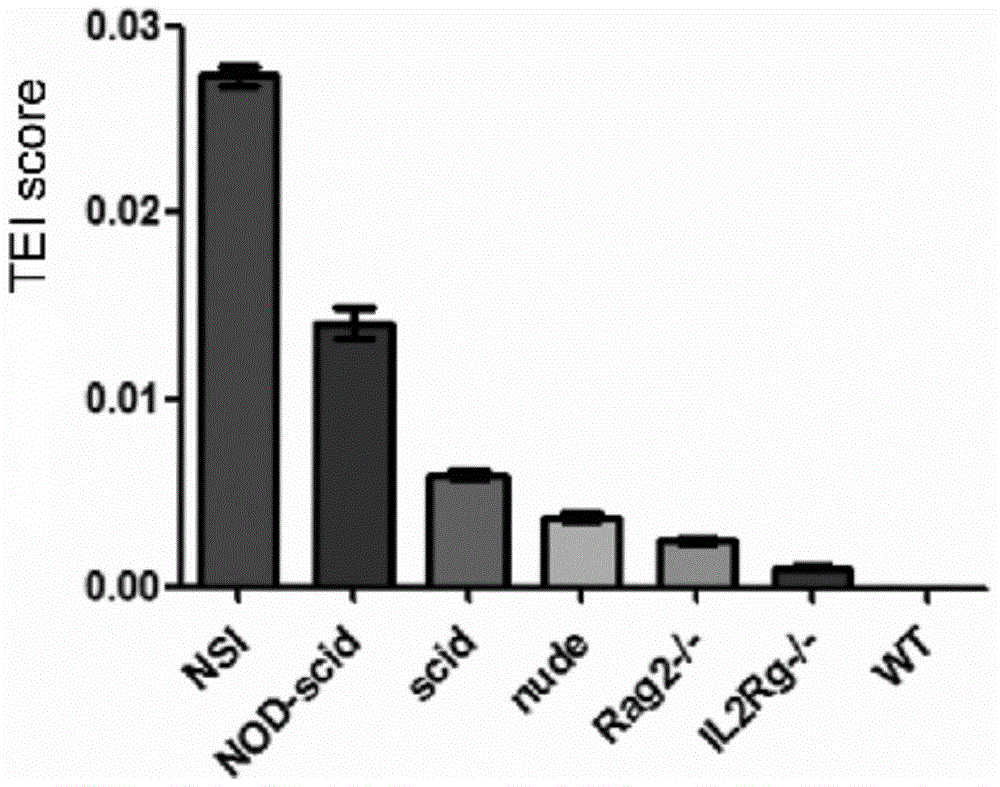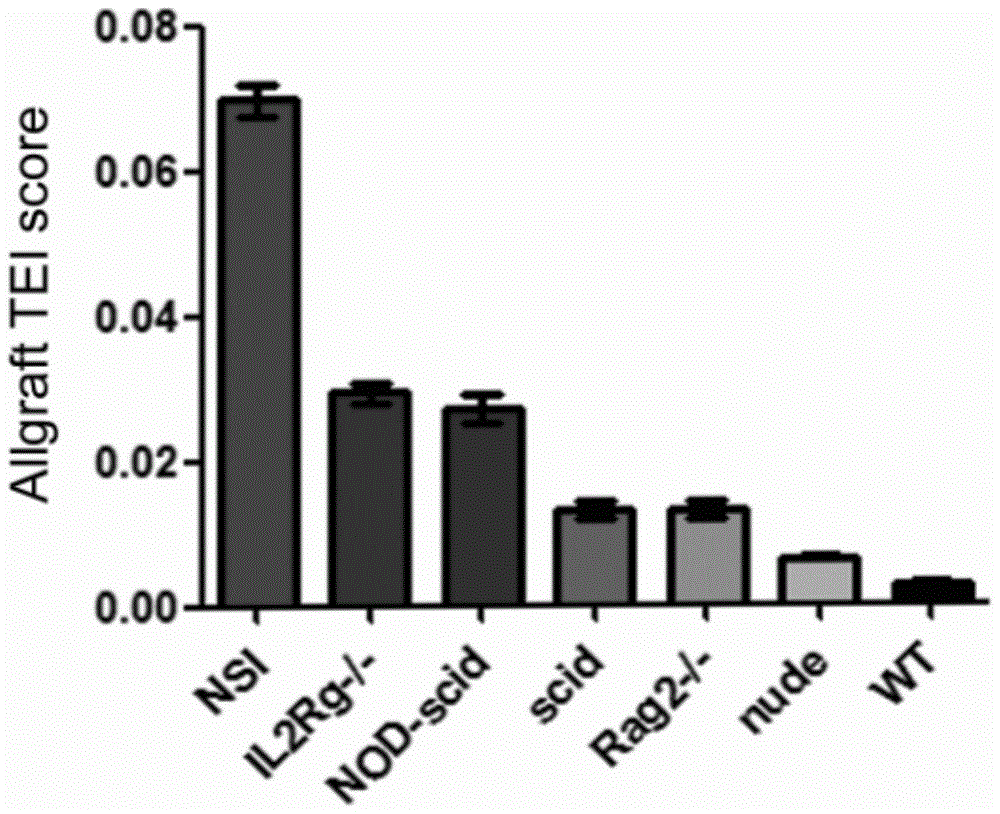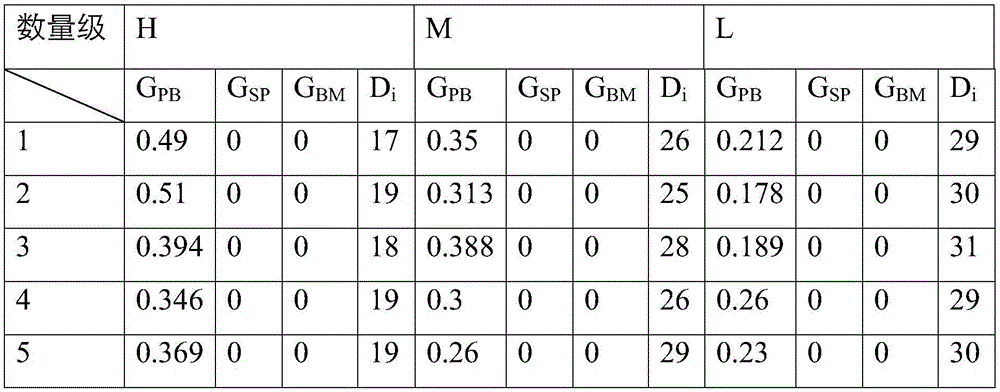Method for evaluating immunodeficiency degree of immunodeficient mice model
An immunodeficiency mouse, immunodeficiency technology, applied in animal husbandry, etc., can solve the problems of blind construction and use of immunodeficiency mice, difficulty in the degree of immunodeficiency, unfavorable standardization and promotion of immunodeficiency mice, etc.
- Summary
- Abstract
- Description
- Claims
- Application Information
AI Technical Summary
Problems solved by technology
Method used
Image
Examples
Embodiment 1
[0021] Embodiment one: specific implementation steps:
[0022] Construction of human hematoma cell line with marker gene
[0023] In order to facilitate the promotion and application of the present invention, the human chronic myeloid leukemia cell line K562 is used as the standard (heterogeneous) human blood tumor cell of the immunodeficiency mathematical model, and the human lung adenocarcinoma cell line A549 is used as the standard of the immunodeficiency mathematical model ( Heterogeneous) human solid tumor cells, and marker genes (such as GFP green fluorescent gene, Tdtomato red fluorescent gene, Luciferase luciferase, etc.) were introduced into the K562 cell line. The following describes the GFP green fluorescent gene transfection method, packaging Lenti-GFP virus to infect tumor cell lines, expanding and culturing the infected cells, sorting the successfully infected GFP positive tumor cells, and obtaining GFP positive cells with a purity greater than 98%.
[0024] ...
Embodiment 2
[0034] Utilize the method for evaluating the degree of immunity of mice of the present invention, comprehensively assess the degree of immunodeficiency (TEI) of NSI (NOD-scid IL2rg- / -) mice NSI ),Specific steps are as follows:
[0035] 1.1. HTEI NSI Numerical calculation: Transplant K562-GFP cells of H, M, and L magnitudes into NSI mice, observe the mice every day, and obtain and record the experimental parameters in the following table when the mice become ill:
[0036] Table 1. NSI mouse-human blood tumor transplantation model parameter table
[0037]
[0038] Substitute the above parameters into the formula to get:
[0039] HETI ( N S I , H ) = 1 5 Σ n = 1 5 G ...
Embodiment 3
[0056] Utilize the method for evaluating the degree of immunity of mice of the present invention, comprehensively assess the degree of immunodeficiency (TEI) of NOD-scid (abbreviation: NS) mice NS ),Specific steps are as follows:
[0057] 1.4. HTEI NS Numerical calculation: Transplant K562-GFP cells of H, M, and L magnitudes into NOD-scid mice, observe the mice every day, obtain and record the experimental parameters when the mice are ill, and record them in the following table:
[0058] Table 3. NOD-scid mouse-human blood tumor transplantation model parameter table
[0059]
[0060] Substitute the above parameters into the formula to get:
[0061] HETI ( N S , H ) = 1 5 Σ n = 1 5 G ...
PUM
 Login to View More
Login to View More Abstract
Description
Claims
Application Information
 Login to View More
Login to View More - R&D
- Intellectual Property
- Life Sciences
- Materials
- Tech Scout
- Unparalleled Data Quality
- Higher Quality Content
- 60% Fewer Hallucinations
Browse by: Latest US Patents, China's latest patents, Technical Efficacy Thesaurus, Application Domain, Technology Topic, Popular Technical Reports.
© 2025 PatSnap. All rights reserved.Legal|Privacy policy|Modern Slavery Act Transparency Statement|Sitemap|About US| Contact US: help@patsnap.com



